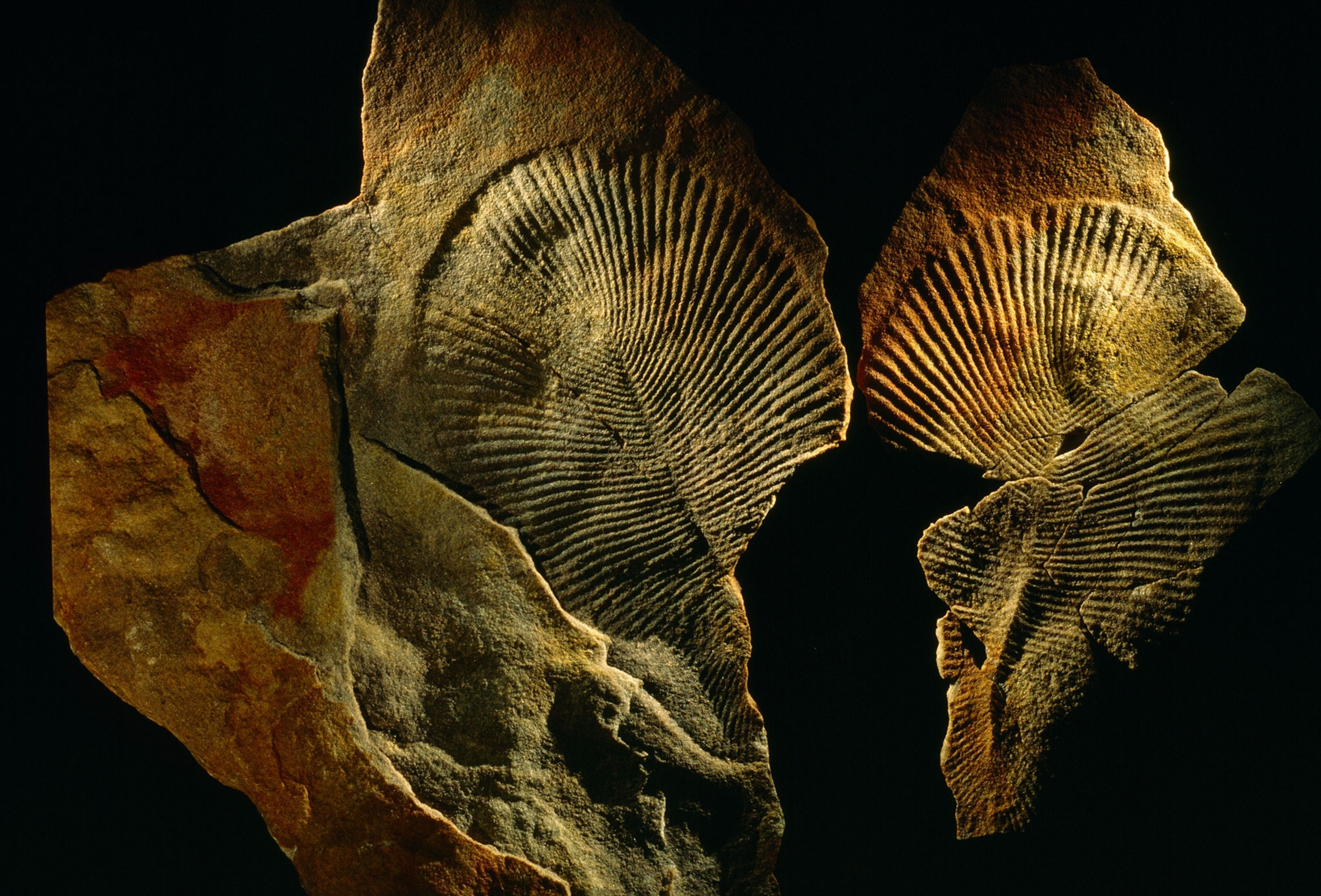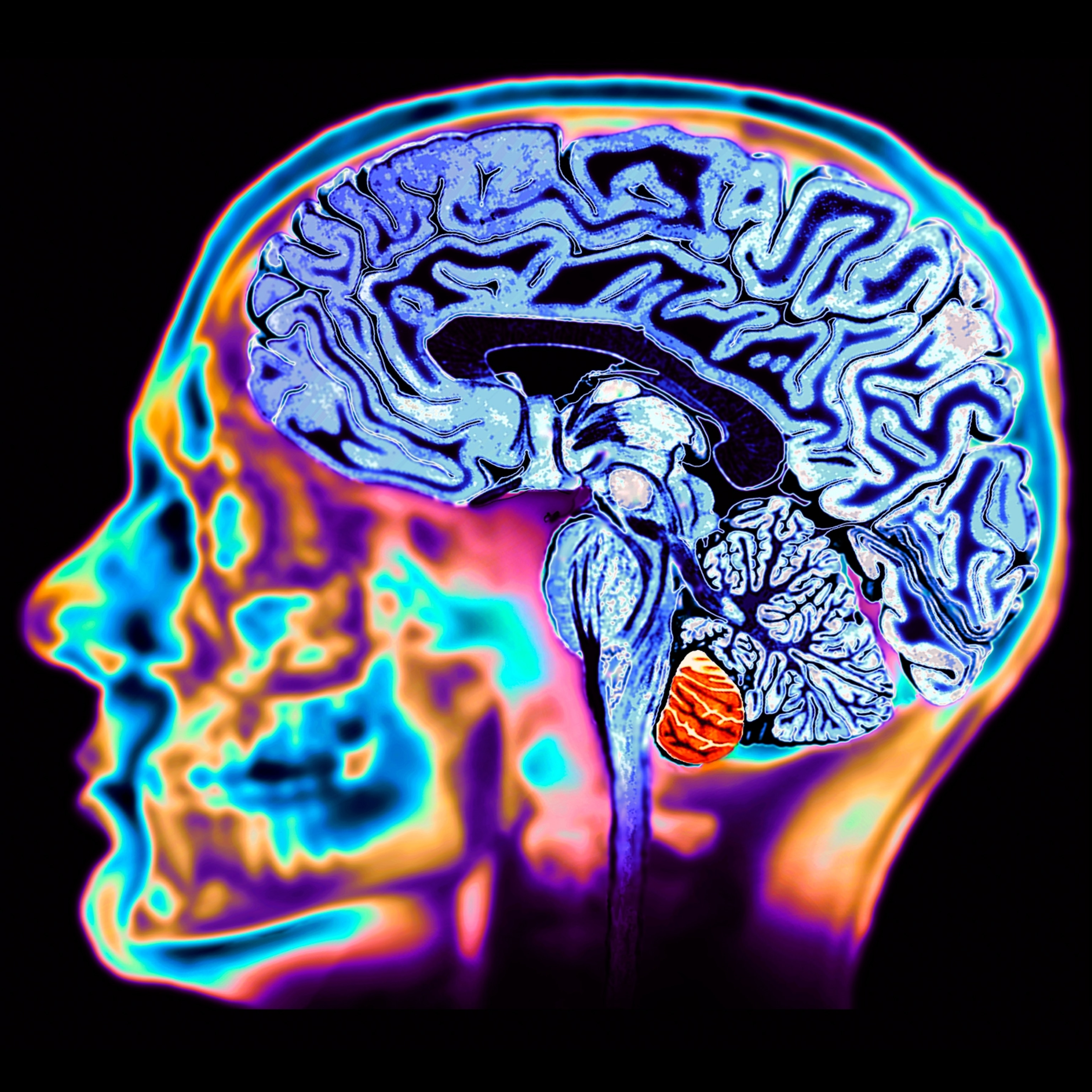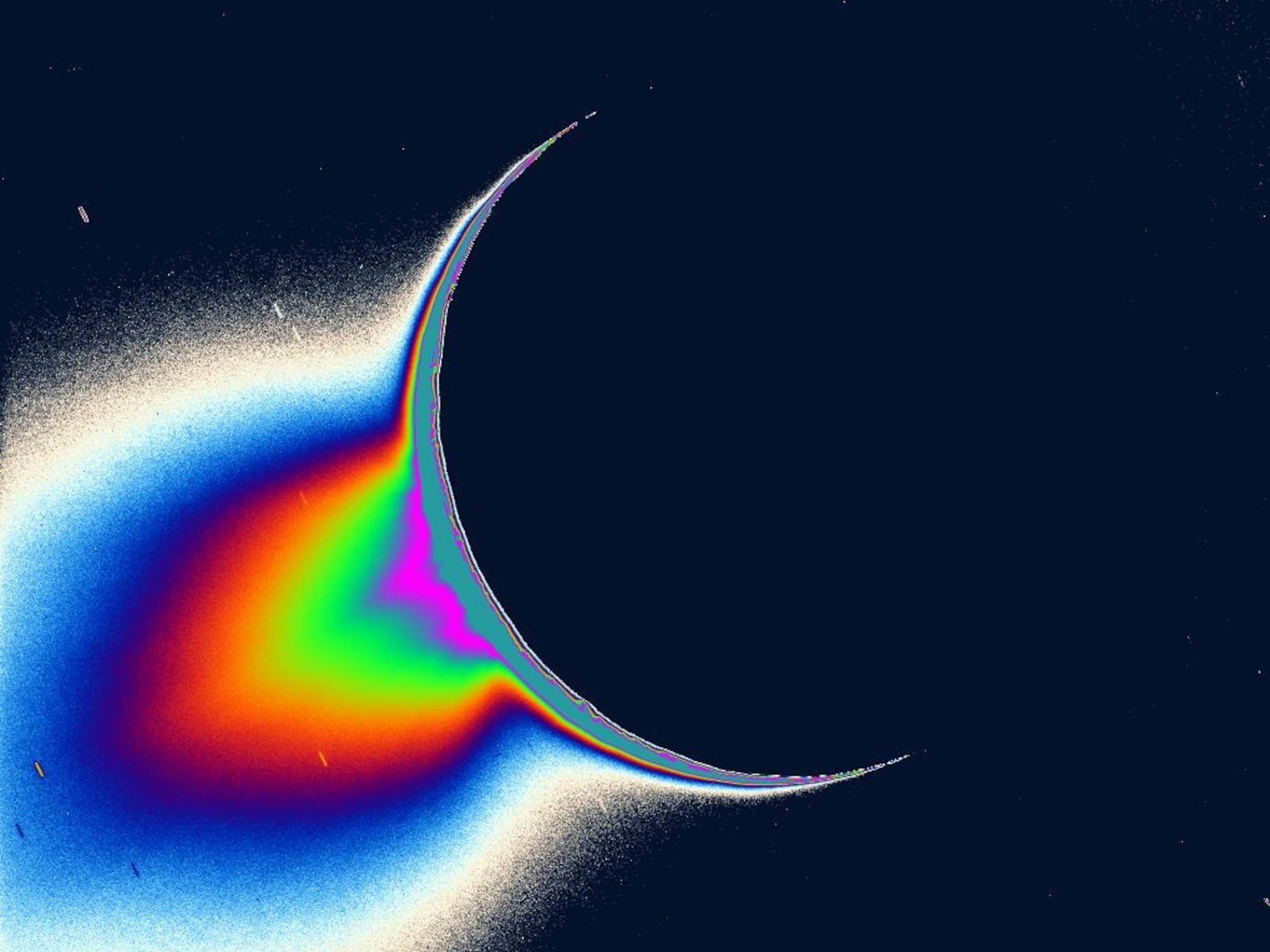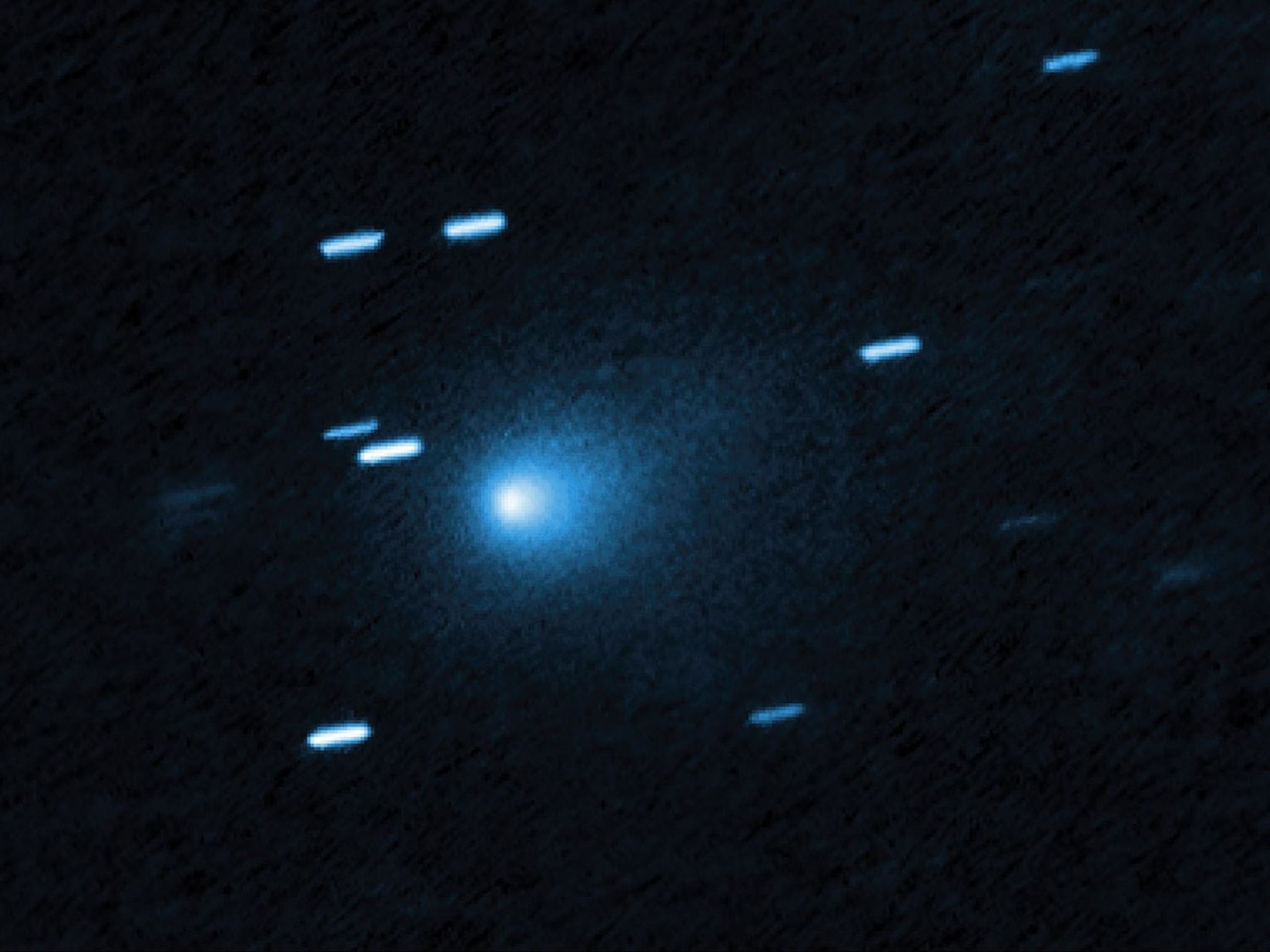The Ediacaran critters were an odd bunch—from ringed discs and patterned blobs to lumpy ropes and wavy fronds. Taking to the warm shallow seas as early as 570 million years ago, these soft and squishy misfits were Earth's earliest complex life.
One of the most famous of the lot is Dickinsonia. This flattened, ribbed oval can grow over four feet across and sports a distinct ridge down its center. However, the question of what exactly Dickinsonia is has long puzzled scientists. At various points in history, they’ve assigned these curious forms to almost every kingdom of life. In recent decades, the debate has swirled around three groups: some researchers proposed fungi, others said protists, still others say animals.
In a new study, published this week in Science, researchers used modern techniques to take a fresh look at the ancient creatures. Their results join mounting evidence that suggests Dickinsonia is among the earliest animal life yet found—predating the Cambrian explosion of life, which took place 541 million years ago and marked the rise of most major animal groups still around today.
“This was already actually one of us,” says study author Jochen Brocks, paleobiogeochemist at Australian National University. “It was an animal.” Though Dickinsonia eventually went extinct, the animal is one of many early experiments in multicellular life that eventually gave rise to our modern menagerie.
“I think it sort of completes the puzzle in our understanding of Dickinsonia,” says Mary Droser, a paleontologist at University of California, Riverside, who was not involved in the work.
In the past few years, she explains, paleontologists largely reached a consensus that Dickinsonia was an animal, based on studies of its imprints. But the new work builds on this evidence, using chemistry to support the animal hypothesis. “This is really helping to put Dickinsonia as part of the story of animal evolution on planet Earth,” Droser says.
What Are the Ediacarans?
First discovered in 1946 in the Ediacara hills in the Flinders ranges of South Australia, these evolutionary oddballs bear only the vaguest resemblance to modern life-forms. Ediacarans are as “strange as life on another planet, but easier to reach,” described paleontologist Adolf Seilacher in a 2007 paper for the Geological Society of London, Special Publications.
Their appearance marks a shift from tiny to tremendous life as evolution tested out body plans of increasing size. More than 50 types of Ediacarans are now known, and they have been found on every continent, save for Antarctica.
By studying when big life burst onto the scene, scientists can better understand the makings of complex creatures. The work could also yield clues about how life arises on far-flung worlds. And compared to finagling research on other planets, “it's a lot cheaper to go back in time and look at how life unfolded on Earth,” Droser says.
How to Study What's Not There
One challenge in studying Ediacarans is the issue of preservation. Their squishy bodies have long since decayed away, and they lack bones or shells that would remain in the fossil record. This means most of these forms are only known from imprints or traces of the ancient inhabitants—many of their delicate features likely lost in the crude traces. The creatures are also very early members of the evolutionary tree, differing greatly from modern life-forms, which makes it difficult to assign them branches. In the 1980s, researchers even proposed Ediacarans should be their own extinct kingdom.
Past work has focused on physical analysis of Dickinsonia traces—growth and development, evidence of movement, size, and complexity. For new clues, in this latest study, scientists turned to molecular biomarkers known as sterols. Many critters make them, but they're slightly different for each group.
Animals make a version known as cholesterols, “like we find in chicken McNuggets,” Brocks jokes. But Ediacarans weren't chowing down on fried foods. These chemical compounds actually play an important role in the membranes of the cells of virtually all animals, helping to regulate what goes in and out.
Scientists have long used biomarker analysis to seek out algae in bulk sediments. “In this case, what you get is an average composition of the ecosystem that was living there,” explains Ilya Bobrovskiy, lead author of the new study and a PhD student at the Australian National University.
Because the Ediacaran bodies are largely imprints, no one had attempted to test for biomarkers of these ancient weirdos. However, some Ediacaran imprints still sport a thin layer of organic material. And Bobrovskiy thought that perhaps the carbonaceous bonds in this organic film hold the secrets to what these bizarre forms once were.
Brocks, Bobrovskiy’s graduate adviser, was skeptical. “I first thought it was a crazy idea,” he says. But not wanting to discourage his ambitious student, he gave the go-ahead.
What Did the Analysis Show?
Bobrovskiy developed a method to test for fossil sterols in the remnants of the Ediacarans, comparing the results to biomarkers extracted from the surrounding rock.
To test the method, Bobrovskiy first turned to the Ediacaran creature Beltanelliformis, once thought to be related to algae, fungus, or even jellyfish. The biomarkers instead pointed to it being spherical colonies of cyanobacteria. They published their analysis earlier this year in Nature Ecology and Evolution.
Then the team turned to Dickinsonia, collecting samples from the White Sea region of northwest Russia.
“The molecular composition of the fossil and the molecular composition from the seafloor around the fossil was black and white,” Brocks says. An abundance of ancient cholesterols—up to 93 percent—in the trace remains pointed to animal. Whereas the surrounding seafloor had very little, and instead contained what's known as ergosteroids, suggesting the presence of green algae.
The beautiful simplicity of the analysis is partly what makes this new work remarkable. “It's a very creative way to try to get at this question,” says Paula Welander, a microbiologist at Stanford University who was not involved in the study. “It's one of those things: Why didn't anyone think of doing it before?”
The method will likely be useful to help understand other enigmatic Ediacarans, says Renee Hoekzema, a palaeontologist and mathematician at the University of Oxford who was not part of the work, via email. She'd be particularly interested in chemical analysis of the plume-like rangeomorphs, which may be related to Dickinsonia. This is one of the forms Brocks and his group are targeting next.
"This is an exciting time," Hoekzema says. "After seventy years of debate we are starting to get a grip on the enigmatic nature of the Ediacara biota."
How Can Biomarkers Stick Around For So Long?
Over time, all organics break down. Cholesterol is no exception, Brocks notes. But the products of this decay are very specific, he explains, and “the original skeleton of the cholesterol” is still preserved in these molecular fossils.
Welander, who studies the creation and function of modern sterols to help better interpret ancient traces, praises the rigorousness of the work, noting the team “really dotted all their i's and crossed all their t's.”
Of course, nothing is ever certain in the world of science. The study is based on the assumption that only animals create cholesterols, which Welander notes is fair with the current data but has the potential to change as we learn more about the many forms of life on Earth.
“There's a lot of uncertainty,” Bobrovskiy says of studying such ancient life. “But applying biomarkers removes a large part of this uncertainty.”
Droser adds: “Coupled with everything else, it is really hard to argue that this wasn't an animal.”
Was Dickinsonia the First Animal Ever?
Though scientists can't say exactly when the first animal arose, ancient traces hint it was more than 600 million years ago. However, Dickinsonia, with its newly confirmed classification, falls among a group of the oldest animals yet found. Kimberella, an early mollusk-like animal, rivals Dickinsonia in age. So does the worm-like creature that likely left the winding tracks known as Helminthoidichnites.
Around 541 million years ago, squishy Ediacarans gave way to the fantastical critters of the Cambrian explosion, trussed up in their spikes and armor.
Together, this spectacular array of early life helps us better understand the collection of creatures that now swim, hop, fly, gallop, and waddle around the world. “We're amazed at the diversity of life and how life has adapted to various environments on this planet,” Droser says. “But that's an artifact of the last billion years on this planet of evolution and extinction...and the Ediacara biota is the start of that.
























